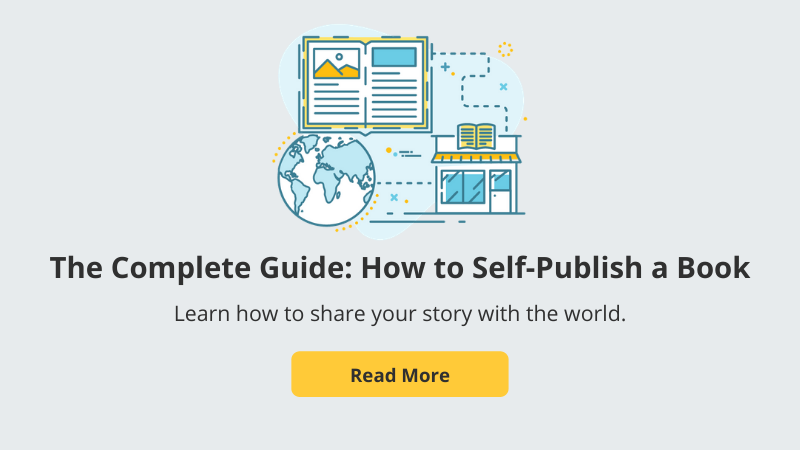Making a habit of marketing your books is important for all authors and publishers. Some habits are good, leading to long-term success. Others are not so good and can keep you from reaching your goals.
How can you tell if a habit is good or bad?
Good habits are hard to make and easy to break. Bad habits are easy to make and hard to break.
Many authors and publishers are in the easy-to-make habit of selling only through bookstores. They market each new title in the same way they did all previous books. While that habit is not inherently bad, it could limit your sales, revenue and profits.
All actions—whether habitual or spontaneous—cause a result which can be either good or bad. In both cases the result is a temporary condition. Change the actions that lead to bad results and reinforce the cause of good outcomes. The goal is progress, not perfection. Here are some tips for creating and adopting good book-marketing habits.
9 Tips for Creating Good Book-Marketing Habits
1. Define your target readers.
2. Be strategic in your marketing.
3. Plan.
4. Develop the attributes that lead to success.
5. Participate in a mastermind group.
6. Ask questions to find new ways of doing things.
7. Distinguish between problems and symptoms.
8. Jolt your creativity.
9. Break the negative-self-talk habit.
1. Define your target readers.
When asked who their target reader is, many authors reply, “I do not know,” or “everybody who likes (their topic).” Either answer will reduce your sales. If your book is for everybody, how much would it cost you to reach them frequently enough to make an impact—if you could find a way to do so?
Define your target readers with the Five Ws:
- Who are they?
- What do they want to buy (print, ebook or other)?
- Where do they shop?
- When do they buy?
- Why do they buy (problem they want to solve)?
2. Be strategic in your marketing.
Now that you have a better understanding of your target buyers you can be more strategic in your marketing. While most focus on pricing your book the same as competition, you can also price it based on your target audience's demographics (income, age, family circumstances). Create distribution to have your books available where they shop (bookstores, supermarkets, discount stores, gift shops, airport stores, etc.). Promote the benefits of your content (why people need it) with an assorted mix (publicity, advertising, social media, personal selling, etc.) when they are in the buying process.
3. Plan.
Ask yourself questions stimulating innovative ways to build your book marketing plan.
- How many titles will I publish?
- At what price will they be sold?
- How will they be distributed in traditional and non-bookstore markets?
- How can I use publicity, advertising, sales promotion and personal selling techniques to promote them?
- What will all this cost and how much can I expect to make at the end of the year?
- How will all that position my business for future growth?
![]() Planning is like laying track for a railroad—it establishes a solid foundation, provides a path to your destination and controls deviation. It also helps you to continue moving toward your destination when uncontrollable events occur. But just as the track does not propel you forward, neither does your plan. Your passion and productive action provide the fuel for the engine taking you on your journey to success.
Planning is like laying track for a railroad—it establishes a solid foundation, provides a path to your destination and controls deviation. It also helps you to continue moving toward your destination when uncontrollable events occur. But just as the track does not propel you forward, neither does your plan. Your passion and productive action provide the fuel for the engine taking you on your journey to success.
4. Develop the attributes that lead to success.
What do you need to succeed in book marketing? Your first thought may be money, but that is not as critical as you may think. The most important attributes that lead to success cannot be purchased. Money will come when you do everything else right. Here are my Top 10 “Must Haves” for success in book marketing: 1) Information, 2) Contacts, 3) Ideas, 4) Persistence, 5) Support, 6) Skills, 7) Plans, 8) Accountability, 9) Strategy and 10) Resources.
5. Participate in a mastermind group.
This is a small interactive group of people who have experienced the trials and tribulations of successful book publishing/marketing—and are willing to share their lessons. It as a group of people who want the accountability and inspiration that will take their businesses to a higher level. When conducted correctly, a mastermind group becomes a community in which you can actively participate and get the benefit of differing perspectives to help you achieve your personal and business goals.
6. Ask questions to find new ways of doing things.
You probably heard the definition of insanity as doing the same thing over and over and expecting different results. The same can be said of asking questions: asking the same kind of questions and thinking you are going to get different answers.
Ask yourself questions to open new sources of revenue. For example, “What if there were no bookstores—how would I sell my books? Who else could be a target reader and where do they shop? What are the benefits that my content provides readers that competitive titles do not?”
Ask yourself two questions, the answers to which could make you more successful this year.
- First, “Wouldn’t it be great if this year I …?”
- The second is, “But I can’t because …”
7. Distinguish between problems and symptoms.
You may think you have a problem of poor sales. However, sales are like a thermometer in that they only serve as a measuring device, not a controlling apparatus. Increases (or decreases) in sales tell you that you are doing something right (or wrong) but they offer no insight into what caused them.
 For greater impact, review the actions that cause sales fluctuations and place your attention on adjusting them for maximum effectiveness. Why are sales down? Are you marketing to the right target segments? Are you communicating the benefits of your content? Are your books priced properly and available where target buyers shop? Is your content delivered in the desired form? Address these underlying issues and your sales should improve.
For greater impact, review the actions that cause sales fluctuations and place your attention on adjusting them for maximum effectiveness. Why are sales down? Are you marketing to the right target segments? Are you communicating the benefits of your content? Are your books priced properly and available where target buyers shop? Is your content delivered in the desired form? Address these underlying issues and your sales should improve.
8. Jolt your creativity.
The more often you do something in the same way, the more difficult it is to think about doing it in any other way. Break out of this “prison of familiarity” by disrupting your habitual thought patterns. Start writing your book from its conclusion. Walk up to a stranger while networking and introduce yourself. Make phone calls to prospective buyers in corporations, associations, schools, etc. Disrupting your routine will lead to new ideas.
9. Break the negative-self-talk habit.
Learn from your less-than-successful ventures (otherwise known as failures). There is really no such thing as failure—you simply you create a result. For example, during one campaign to get on TV and radio shows I sent out 500 letters. I was ignored by 490 and rejected by the others.
I didn’t fail 500 times—I learned a different way to succeed.
I sent a “thank-you” note to the ten rejections, thanking them for having the courtesy to respond. One actually turned into an on-air appearance. Then I created a business-reply card and re-sent that to the other 490 and got a 33% response—and many media appearances.
When you do something that expands your comfort zone you may experience one of the “Re” words: Rejection, Returns, Rescinded orders, and Reviews that are not good. As you deal with each of these your skin will thicken, allowing you to develop new, profitable and long-term marketing habits.














